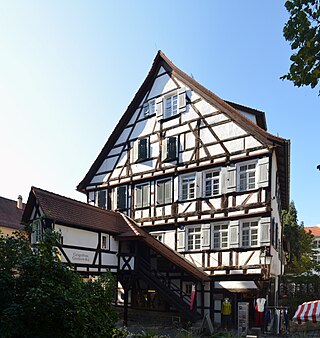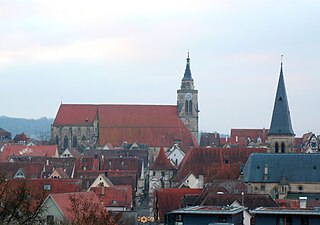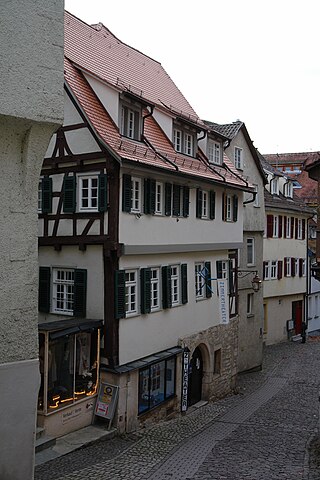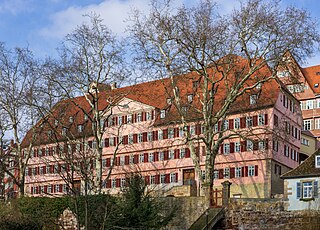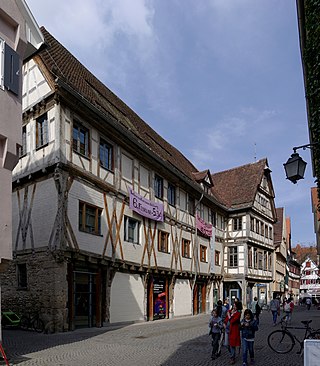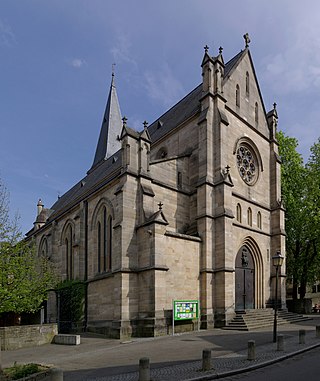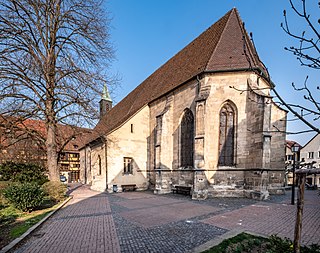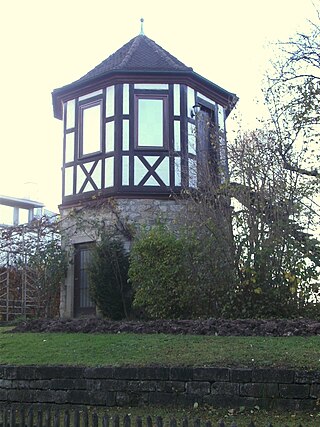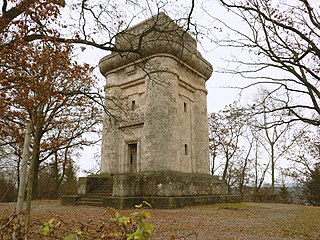Self-guided Sightseeing Tour #2 in Tübingen, Germany
Legend
Tour Facts
3.6 km
67 m
Experience Tübingen in Germany in a whole new way with our free self-guided sightseeing tour. This site not only offers you practical information and insider tips, but also a rich variety of activities and sights you shouldn't miss. Whether you love art and culture, want to explore historical sites or simply want to experience the vibrant atmosphere of a lively city - you'll find everything you need for your personal adventure here.
Individual Sights in TübingenSight 1: Boxenstop Auto- und Spielzeugmusem

Boxenstop is a car and toy museum in Tübingen that shows the private collection of the operators Rainer and Ute Klink.
Sight 2: Nonnenhaus
The nun's house in Tübingen (Baden-Württemberg) is one of the best-preserved beguinages in Germany. Presumably, in 1488 first Dominican nuns, then Beguines, the "nuns", lived in the half-timbered house. With a length of 30 meters, it is one of the largest half-timbered houses in Tübingen's old town.
Sight 3: Grablege
The Stiftskirche is a church located in Tübingen, Baden-Württemberg, Germany. It is a late Gothic structure built by Peter von Koblenz in 1470. The stained glass windows were designed by Peter Hemmel of Andlau who also designed windows in Ulm, Augsburg, Nuremberg, Munich and Strasbourg. It is the central landmark of Tübingen and, along with the rest of the city, the Stiftskirche was one of the first to convert to Martin Luther's Protestant church. It maintains several "Roman Catholic" features, such as patron saints.
Sight 4: Zimmertheater
Zimmertheater Tübingen is a very small theatre in Tübingen, Baden-Württemberg, Germany in close neighbourhood to the Hölderlinturm, where Friedrich Hölderlin spent his last years in life and near the Neckar river. It opened in 1958 and has two rooms for an audience of 60 and 80 visitors.
Sight 5: Hölderlinturm
The Hölderlinturm is a building located in Tübingen, Germany that served as the place of residence and death in the final years of poet Friedrich Hölderlin. He lived there from May 3, 1807 until his death in 1843. The building is located on the Neckar riverfront and is one of the most popularly known sites in Tübingen.
Sight 6: Alte Burse / Institut für Philosophie und Kunstgeschichte
The Burse is a building in the south of Tübingen's old town, slightly elevated above the Neckar. The original meaning of the institution can be read in detail in the article Burse. The Tübingen Burse was built between 1478 and 1482. Construction began only one year after the founding of the Eberhard Karls University. A significant part of the founding of the Tübingen Burse is due to the commitment of Eberhard im Bart's mother, Mechthild von der Pfalz. In the central beam of the entrance area of the Burse are carved the palm tree and Eberhard's motto in the beard: "Attempto", which are still the logo of the University of Tübingen today.
Sight 7: Stadtmuseum Tübingen
The Tübingen City Museum, which emerged from "Municipal Collections", is housed in a former granary that is over 500 years old at Kornhausstraße 10 in the old town of Tübingen. The museum houses a permanent exhibition on the history of the city, which gives an overview of the history of Tübingen over the last 600 years, as well as a permanent exhibition on the silhouette artist Lotte Reiniger. In addition, the museum shows several temporary exhibitions a year, each of which is accompanied by an extensive catalogue.
Sight 8: Johanneskirche
The Catholic parish church of St. John the Evangelist in Tübingen was built from 1875 to 1878 by the court architect Joseph von Egle in the neo-Gothic style.
Sight 9: Jakobuskirche
The St. James' Church, also known as the Spitalkirche, in Tübingen is a Romanesque church originally dedicated to St. James, which is now used by the Tübingen Protestant St. James parish in the church district of Tübingen. Together with the neighbouring salt barn, it forms the historic centre of Tübingen's lower town, the so-called Gôgei.
Sight 10: Goethehäuschen
The Goethe House in Tübingen is an octagonal garden house located west of the old town and Hohentübingen Castle on the ridge of the Schlossberg, which received its common name after a visit by Goethe during a walk on September 7, 1797. Goethe visited his publisher Johann Friedrich Cotta in Tübingen at the time.
Sight 11: Bismarckturm Tübingen
The Bismarck Tower is a 16-metre-high observation tower in Tübingen, completed in 1907 as a Bismarck monument, which was built according to the design "Götterdämmerung" by Wilhelm Kreis under the Tübingen government architect Franz Bärtle. The 16 m high Bismarck Tower was built of tuff and coarse-grained sandstone. It stands on the Schlossberg 1.3 km west of Hohentübingen Castle at the end of Lichtenberger Weg. The Bismarck Tower is considered the landmark of Tübingen's Weststadt.
Share
How likely are you to recommend us?
Disclaimer Please be aware of your surroundings and do not enter private property. We are not liable for any damages that occur during the tours.
GPX-Download For navigation apps and GPS devices you can download the tour as a GPX file.
